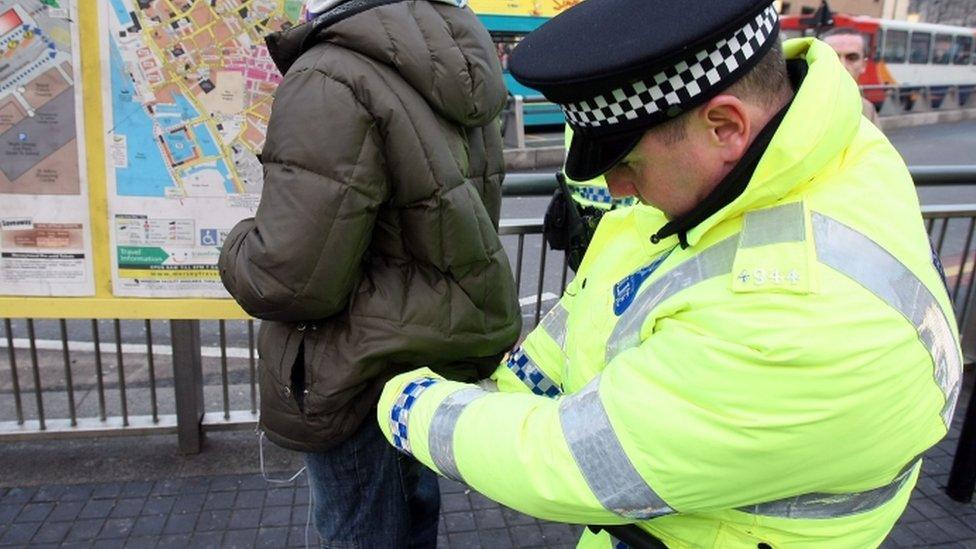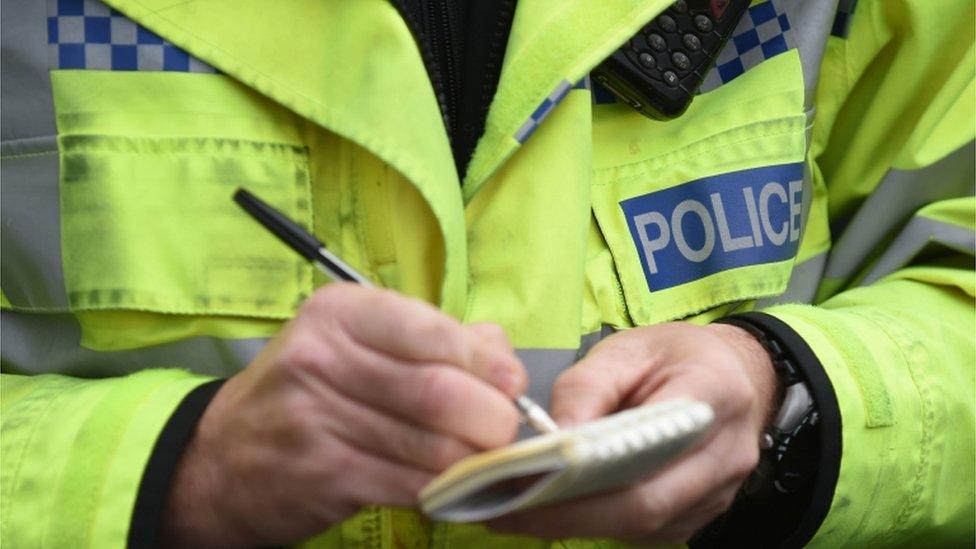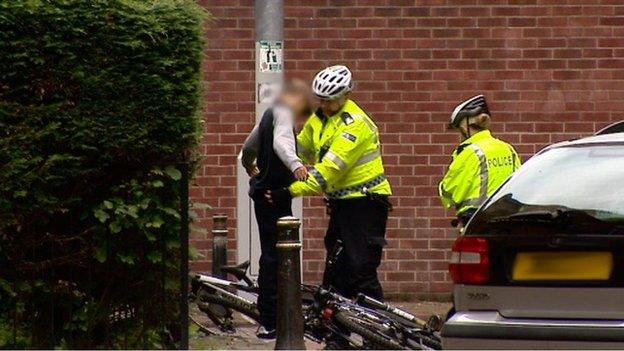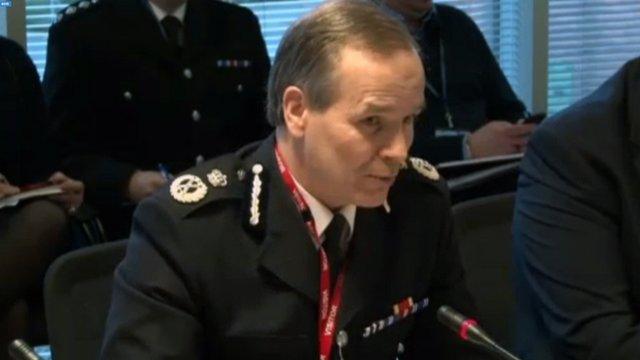New data reveals massive fall in police stop-searches
- Published

The Scott Report questioned the use of consensual stop-and-search
An independent report into consensual stop-and-searches in Scotland has called for the practice to be stopped. The report's recommendations come as the latest statistics on searches by officers are published. So, what have we learned?

The latest stop-search data by Police Scotland appears to emphasise not only that there was a target culture within the force around the controversial practice, but also how poorly managed the data was in the past.
Interestingly Police Scotland released the latest quarterly data, external in not one, but two spreadsheets.
It should be pointed out that the release of the figures was also published on the same day as reports into the system of stop-search and the M9 crash in which two people died after their crashed car was left unattended for days.
The two spreadsheets have almost been overlooked on what has been an incredibly busy news day.
Looking at these data sets, what can we conclude?
The first spreadsheet, for April-May 2015, shows a massive reduction in the number of searches from the same period last year.
In this two-month period, officers conducted 37,162 searches - that's about the same number undertaken in just the one month of May last year.
Police Scotland, and the outgoing Chief Constable Sir Stephen House, has long denied the existence of targets and yet this data seems to suggest otherwise.
But despite these new data sets, the single police force has remained adamant that it "did not have and does not have any targets around the volume of stop and search".

Were police officers tasked with reaching stop-and-search targets?
Since BBC Scotland broke the story about the continued practice searching under-12s, the total number of searches has decreased steadily.
Even the independent Scott Report, external has stated stop-and-search use was "excessive" and that "this is emphasised by the significant reduction in its use more recently, especially since April of this year".
Some police sources also told the advisory group that the "use of the tactic took it beyond any available intelligence and best use of officer hours".
The report added: "It is clear that targets...have been a significant factor, possibly the significant factor in driving up numbers and influencing daily practice [of stop and search]".
But not only have the number of searches halved in the last year - the number of consensual searches reduced drastically from approximately 70% to 46%.
And what's more the success rate of consensual searches during these two months improved to 30% - up from 21% for the same period in 2014.
Second data set
But perhaps what is more interesting is the fact that Police Scotland released a separate, second spreadsheet for the month of June.
This data has been extracted from "an enhanced national database was rolled out across Scotland on 1 June 2015 together with changes to operational practice and recording procedures."
The enhanced database apparently includes additional validations designed to improve the quality of the data by preventing inaccurate data capture through input error.
One such validation apparently includes the verification of a person's age.
These enhancements came in the wake of Sir Stephen admitting that data released to BBC Scotland was "inaccurate".
In response to the new data, a Police Scotland spokesman said: "Police Scotland has been working through a substantial programme of improvement around the use and recording of stop and search. As part of these ongoing improvements, an enhanced database was launched across Scotland on 1 June.
"Due to the improvements made, and recognising that the data captured previously is not wholly accurate, it is not appropriate to compare the new stop and search data against the historical data.
"The number of stop searches has dropped every year of Police Scotland and the number of stop searches carried out in the final years of the eight legacy forces was higher in than the first year of Police Scotland."
The fact that this data has been released separately serves to draw a line under the debacle of not only how the force has conducted searches, but also how it has recorded the search data previously.
The data includes;
new detailed description fields
new refusal data
and seizure data.
A refusal is where someone refused a consensual search; a seizure is where a search was not necessary and items such as weapons or alcohol were seized.
However, the data shows that there were only 33 refusals - that means only 1% of consensual searches were denied even though a person can legally refuse to be searched.
This underlines the fact that many aren't aware of the different types of search,
Combined with the media scrutiny, the two new criteria of seizure and refusal have arguably contributed in a further decline in stop and search totals.
These 2,491 seizures of alcohol would otherwise have boosted the figures for consensual and statutory searches for example.
Who is a child?
The segregated June data reveals there were just 11,680 searches that month - only one of which was on a minor under 12.
That compares to 42,447 searches in June 2014, a month in which 52 children were searched.
And on the topic of conducting consensual searches on children, the Scott Report noted the many ways in which "children" can be defined.
It proposed that children are not only those under 16 but those under 18 too, "as currently proposed in the Criminal Justice (Scotland) Bill."
If that's the case the latest data is even more interesting as 809 under-18s were still searched last June.
Ultimately, this is a step forward in transparency and accountability as we are now able to search the raw data for ourselves - it's just a shame it's taken so long and so many controversies to get there.
- Published4 February 2015

- Published13 February 2015

- Published31 March 2015
